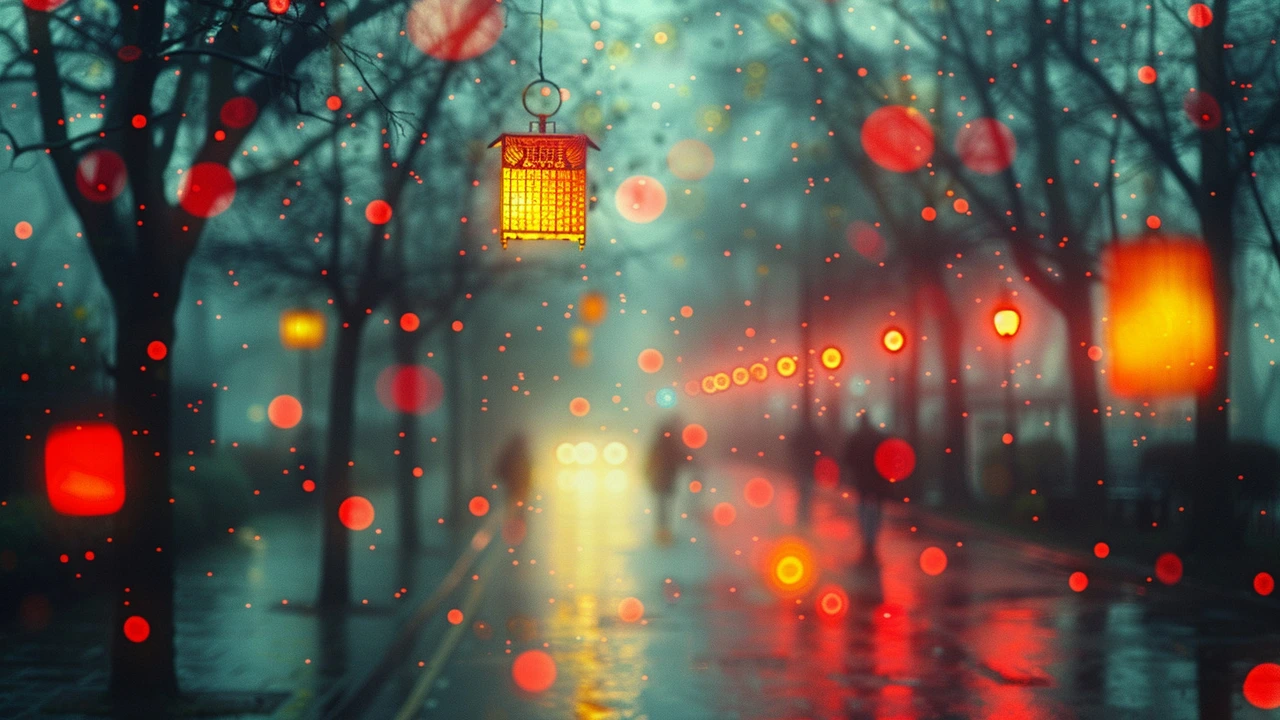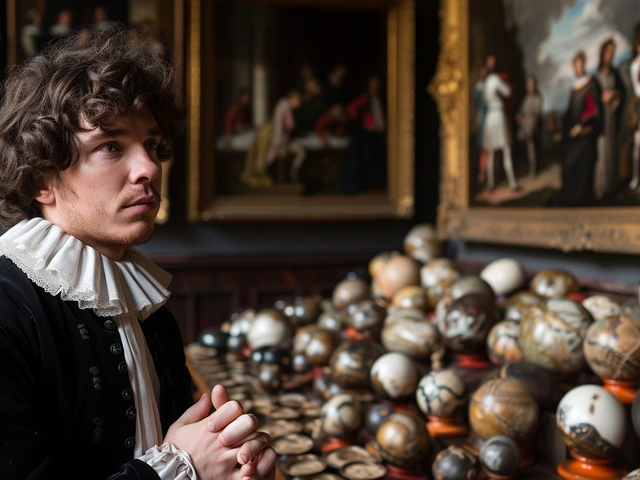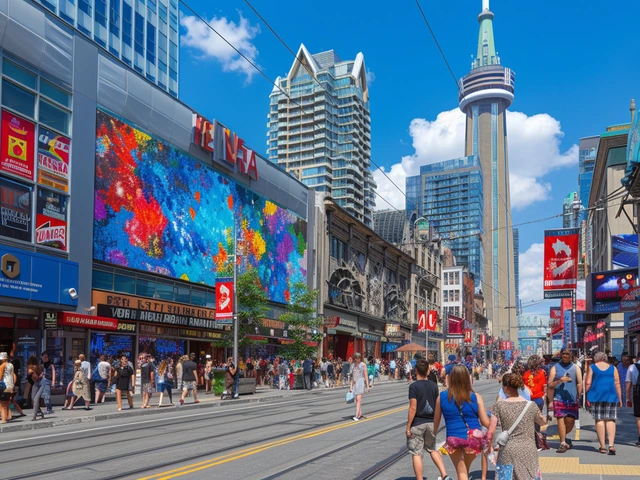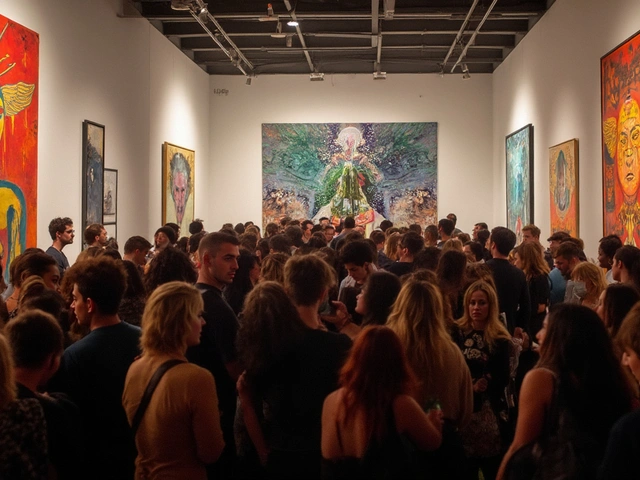Photography is an art form that has the power to capture not just moments, but emotions and ideas as well. While traditional photography focuses on realism and documentation, conceptual photography dives deeper, blending visual elements with profound concepts to narrate a story or evoke a certain emotion.
This type of photography often challenges our perception, asking us to see beyond the surface and contemplate the deeper meaning behind the image. It becomes a canvas for photographers to express their thoughts and feelings in a way that words sometimes cannot.
In this piece, we will uncover the beauty of conceptual art in photography, exploring its origins, key elements, and the techniques that can help bring these powerful ideas to life through the lens of a camera.
- Introduction to Conceptual Photography
- Historical Development
- Elements of Conceptual Photography
- Techniques and Tools
- Famous Conceptual Photographers
- Creating Your Own Conceptual Art
Introduction to Conceptual Photography
Conceptual photography is a fascinating branch of the visual arts that focuses on the idea or concept behind an image. Unlike traditional photography, which aims to capture reality, conceptual photography uses a staged approach to convey deeper meanings and emotions. It often involves pre-visualization, meaning that the photographer plans and constructs the image long before the shutter clicks.
One of the key aspects of conceptual photography is its ability to tell a story or express an idea. This form of art challenges viewers to think beyond what they see, prompting them to explore the underlying message. Often, these photographs are imbued with symbolism and metaphors, which can be both explicit and subtle. The goal is not just to capture a moment, but to provoke thought and dialogue.
Historically, conceptual photography has roots in early 20th-century art movements such as Surrealism and Dadaism. Artists like Man Ray and René Magritte used photography and photomontage to create surreal, thought-provoking images. These pioneers laid the groundwork for modern conceptual photographers, who continue to push the boundaries of the medium.
Photographers today use a variety of techniques to create conceptual images. These can include digital manipulation, staged scenes, and creative lighting, among others. The intent is to create an image that communicates a specific idea or emotion, often challenging conventional expectations of what a photograph should be.
One notable contemporary conceptual photographer is Cindy Sherman, who uses self-portraiture to explore themes of identity, society, and artifice. Her work often blurs the lines between reality and fiction, compelling viewers to question their perceptions of identity and the self.
"Photography is a way of feeling, of touching, of loving. What you have caught on film is captured forever... it remembers little things, long after you have forgotten everything." - Aaron Siskind
To fully appreciate conceptual photography, it's important to understand its core components: the concept, the execution, and the viewer's interpretation. The concept is the central idea that the photographer wants to express. Execution involves the technical and creative skills used to bring that idea to life. Finally, the viewer's interpretation is crucial because it adds another layer of meaning to the image. Each viewer brings their own experiences and perspectives, enriching the dialogue between the art and its audience.
In summary, conceptual photography is a powerful tool for artistic expression. It goes beyond mere visual representation to engage with the audience on a deeper intellectual and emotional level. By combining creativity with technical skill, photographers can create images that resonate and provoke thought, making conceptual photography a vital and compelling form of contemporary art.
Historical Development
Conceptual photography has roots that trace back to the early 20th century, a period teeming with artistic innovation and experimentation. It emerged as photographers began to explore the boundaries of what could be captured through the lens. The influence of surrealism, which flourished in the 1920s and 1930s, played a pivotal role in shaping this genre. Artists like Man Ray and Maurice Tabard began to use their cameras not just to document reality but to create images that conveyed complex ideas and emotions. This marked a significant departure from traditional, representational photography.
The post-war era saw further advancements, with photographers increasingly incorporating experimental techniques into their work. The 1960s and 1970s were particularly instrumental, with conceptual art gaining substantial ground. This period witnessed a blending of different art forms, where photography intersected with performance art, installation art, and even text. It was a time when the notion of 'art for art’s sake' began to fade, and artists used their work as a medium for social and political commentary. This was evident in the works of artists like Duane Michals, who is renowned for his photo-sequences that tell intricate stories, often accompanied by handwritten text.
The digital age brought about a seismic shift in artistic practices and conceptual photography was no exception. The advent of digital cameras and editing software like Photoshop opened up endless possibilities for manipulation and creative expression. This era gave rise to a new generation of photographers who pushed the medium to its limits, blending realism with imagination in unprecedented ways. Artists such as Gregory Crewdson became known for their meticulously staged, cinematic images that often required a small army of assistants and elaborate sets.
The beauty of **conceptual photography** is its dynamic and evolving nature. It has absorbed influences from various art movements and technological advancements, continuously reinventing itself. Today, the genre is diverse and expansive, encompassing everything from minimalistic, abstract compositions to intricate, narrative-driven pieces. It remains a powerful tool for artists to express complex ideas, challenge societal norms, and evoke emotions in ways that are both profound and thought-provoking. As the famous photographer Ansel Adams once said, "You don’t take a photograph, you make it." This statement rings particularly true for conceptual photographers, whose work is grounded in the conceptualization and staging of the subject matter, rather than mere documentation.

Elements of Conceptual Photography
Conceptual photography is a captivating genre that goes beyond mere aesthetics. At its core, it melds together the visual with the intellectual, creating an experience that both informs and provokes thought. To achieve this, certain elements are essential. Understanding these can help both photographers and viewers appreciate the depth and meaning behind conceptual works.
Firstly, ideas and themes stand at the forefront of conceptual photography. The photographer begins with a clear concept in mind – a message or a question they wish to convey. This might encompass broad themes like identity, time, or emotion, or be more personal and specific. Without a well-defined idea, the image risks lacking the depth that distinguishes conceptual art from other forms of photography.
The next crucial element is symbolism. In conceptual photography, objects, settings, and compositions are not selected arbitrarily. Each component is chosen for its ability to represent and convey the underlying concept. For instance, an empty chair might symbolize absence or loneliness, while a broken mirror could reflect fractured identities. The use of symbolism allows photographers to communicate dense, multi-layered narratives within a single frame.
Compositional Techniques
Another important element is composition. Every aspect of the image – from the arrangement of elements to the color palette and lighting – plays a role in reinforcing the concept. Bold contrasts might be used to highlight conflict, while muted tones could suggest melancholy or nostalgia. The rule of thirds can be both adhered to or deliberately broken to draw attention to particular parts of the image, guiding the viewer’s interpretation.
John Berger once said, "The relation between what we see and what we know is never settled." This ambiguity is what makes conceptual photography so intriguing, as it leaves room for personal interpretation.
Text and captions can also be a powerful tool in conceptual photography. While traditional photography often speaks for itself, captions can add another layer of meaning, guiding viewers towards a specific interpretation or posing a question to ponder. Words can contextualize an image, providing insights that might not be immediately apparent from the visual alone.
Technical Aspects
The technical aspects of photography should not be overlooked. Mastery of the camera, understanding of exposure, depth of field, and other technical elements are paramount. This expertise ensures that the technical quality of the image does not distract from its conceptual depth. Advanced techniques like multiple exposures, long exposures, and post-processing can be used to create surreal, dreamlike effects that enhance the conceptual message.
Lighting is another key element. In conceptual photography, light is often used to create mood and highlight specific aspects of the scene. Soft, diffused light might suggest a tender, introspective atmosphere, while harsh, direct light could add an element of tension and drama. The direction, intensity, and color of light can all be manipulated to serve the concept.
| Element | Description |
|---|---|
| Ideas and Themes | Central message or question the photograph is based on |
| Symbolism | Use of objects and settings to represent deeper meanings |
| Composition | Arrangement of visual elements to reinforce the concept |
| Text and Captions | Additional layer of meaning through words |
| Technical Aspects | Camera proficiency and post-processing techniques |
| Lighting | Use of light to create mood and focus |
By thoughtfully combining these elements, conceptual photographers can create images that are not just visually striking, but also rich in meaning and emotion. These images invite viewers to pause, reflect, and perhaps see the world in a new light.
Techniques and Tools
Creating conceptual photography requires a unique set of techniques and tools that allow photographers to translate their imagination into captivating images. Unlike traditional photography, which often emphasizes technique and exposure, conceptual photography places a heavy emphasis on the idea behind the image, sometimes even relying on post-processing to complete the vision. Here, we will delve into some of the most effective methods and tools used to create compelling conceptual art in photography.
To begin with, conceptual photographers often use previsualization, a technique wherein the artist imagines the final image before taking the photograph. This involves a detailed planning process, where elements such as the subjects' positioning, lighting, and props are meticulously thought out. One essential tool for this is a storyboard or sketchbook, helping to visualize each component and how it contributes to the overall narrative.
Lighting is another critical element in conceptual photography. Natural light can be beautiful, but sometimes artificial lighting is necessary to achieve the desired effect. This may involve using softboxes, ring lights, or even simple desk lamps to cast shadows creatively and add depth to the scene. Some photographers like Gregory Crewdson are famous for their elaborate lighting setups that transform everyday scenes into otherworldly realities.
In terms of cameras and lenses, many conceptual photographers favor high-quality DSLR or mirrorless cameras for their versatility and control. Lenses with different focal lengths can change the perspective and feel of an image. For instance, a wide-angle lens might be used to create a sense of space and isolation, while a macro lens could focus attention on intricate details usually overlooked by the naked eye.
Post-processing is almost as crucial as the photography itself. Software like Adobe Photoshop and Lightroom allows photographers to manipulate their images to achieve the desired effects. They can adjust colors, contrast, and sharpness to bring out specific elements, or even combine multiple images to create a surreal, dream-like quality. Double exposure techniques, where two photos are superimposed onto each other, can also be utilized to add complexity and layers of meaning.
“Photography is more than a medium for factual communication of ideas. It is a creative art.” – Ansel Adams
Props and costumes play a substantial role in conceptual photography, adding tangible elements to abstract ideas. Whether it’s a vintage suitcase, a veil, or an unusual piece of furniture, these objects help ground the narrative in a visual language that viewers can relate to and interpret. The choice of wardrobe can also convey deeper aspects of the story or theme, by hinting at character, era, or mood.
Finally, location scouting is essential. The right setting can enhance the narrative and provide context that reinforces the viewer’s understanding of the concept. Edward Steichen, known for his pictorialist approach, often utilized carefully chosen backdrops to complement his subjects. Whether outdoors in a forest or indoors in a minimally decorated room, the location needs to align harmoniously with the theme.
By combining these techniques and tools, photographers can bring their unique visions to life, creating powerful works of art that not only capture the eye but also engage the mind in thoughtful contemplation. Conceptual photography is thus an interplay of imagination, skill, and thoughtful execution, requiring a blend of artistic flair and technical proficiency.
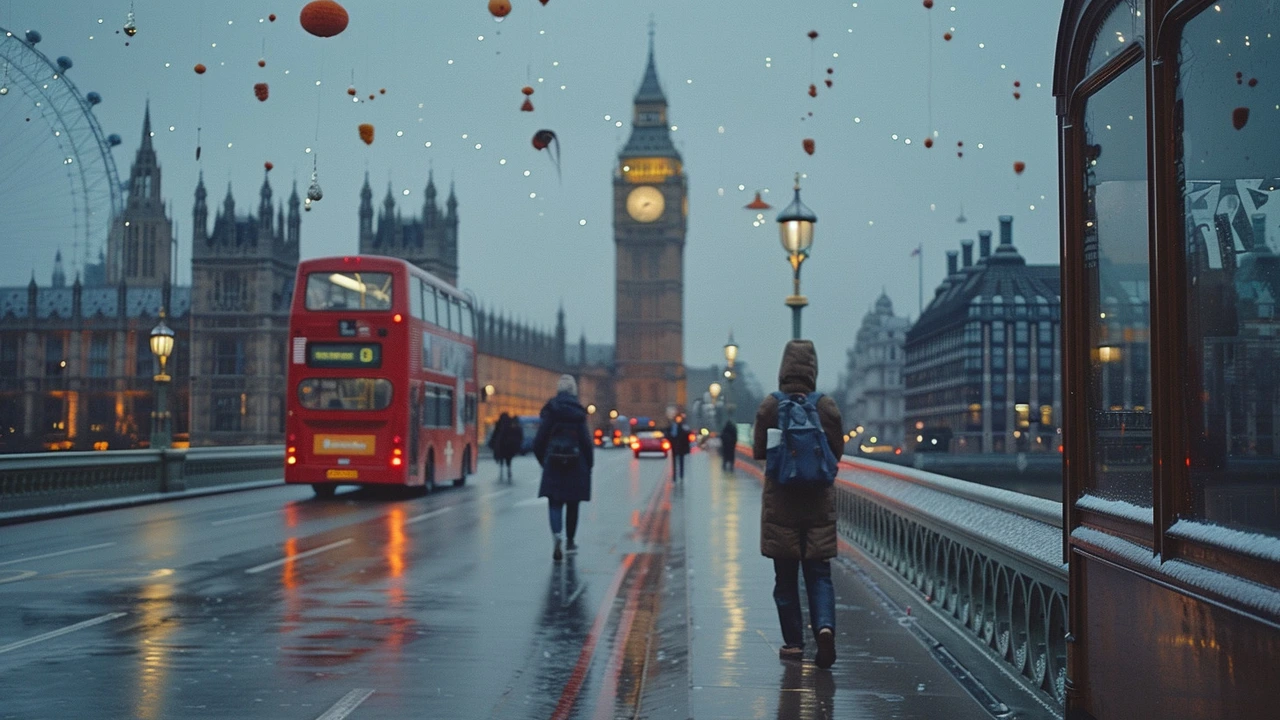
Famous Conceptual Photographers
Conceptual photography has been shaped and defined by several influential artists who have used the medium to challenge and expand our understanding of photography. These photographers have been pioneers, pushing the limits of visual storytelling and inspiring countless others to explore their own creative boundaries.
Man Ray is often hailed as one of the key figures in conceptual photography. His work during the early 20th century broke new ground by combining photography with surrealism. Known for his photograms, which he called 'rayographs,' Man Ray created images without a camera by placing objects directly onto light-sensitive paper. This innovative technique produced abstract and dream-like compositions. His famous piece, 'Le Violon d'Ingres,' is an iconic example of how he merged everyday objects with symbolic imagery to evoke deeper meanings.
Cindy Sherman is another luminary in the field. Her work in the late 20th century stands out for its commentary on identity and representation. Sherman often uses self-portraiture to critique societal norms and stereotypes, transforming herself into various characters. Her 'Untitled Film Stills' series, where she mimics movie stills from the 1950s and 1960s, challenges viewers to question the narratives and roles imposed by the media. Through her carefully staged and costumed images, Sherman explores themes related to gender, fame, and the construction of personas.
Jeff Wall, a Canadian photographer, has also made significant contributions to conceptual photography. Wall is known for his large-scale, back-lit photographs that resemble classical paintings. His meticulous approach involves staging and digitally composing complex scenes that often reference art history, literature, and modern life. One of his well-known works, 'A Sudden Gust of Wind (after Hokusai),' reinterprets a 19th-century Japanese woodblock print in a contemporary setting, blending historical and modern elements seamlessly.
"Photography is not about the thing photographed. It is about how that thing looks photographed." - Garry Winogrand
Hiroshi Sugimoto brings a meditative and philosophical approach to conceptual photography. His 'Seascapes' series, depicting the horizon line where sea meets sky, captures the timeless essence of nature. By using a large-format camera and long exposure times, Sugimoto creates images that strip away distractions and focus on the fundamental beauty of the natural world. His work often raises questions about time, existence, and our perception of reality.
Gilllian Wearing, a British conceptual artist, uses photography to explore the tension between public and private personas. In her series 'Signs that say what you want them to say and not Signs that say what someone else wants you to say,' Wearing photographed strangers holding signs with personal messages. This simple yet powerful concept reveals the hidden thoughts and emotions people carry, challenging our assumptions about identity and authenticity.
These photographers, among many others, have made lasting impacts on the world of conceptual photography. By pushing the boundaries and using the medium as a tool for exploration and self-expression, they have opened up new possibilities for artists everywhere.
Creating Your Own Conceptual Art
Diving into the world of conceptual photography is both a challenge and a rewarding experience. The journey begins with an idea that you wish to express. It might be a feeling, a social issue, or even a philosophical question. Start by brainstorming and jotting down your thoughts without any constraint. The more you let your mind wander, the more creative and unique your concept will be.
Once you have a solid idea, think about how you can visually represent it. This doesn't necessarily mean using elaborate props or locations. Sometimes, the simplest elements can convey the most powerful messages. Focus on elements like composition, lighting, and subject matter. These components play a crucial role in bringing your conceptual art to life.
Planning is an essential step in this process. Sketch your ideas on paper or use digital tools to create a layout. This will give you a clear vision of your final image. Consider every detail, from the colors to the textures, and how they contribute to the overall theme. Many photographers find that a storyboard helps to organize their thoughts and ensures that no part of the concept is overlooked.
When it comes to execution, don't be afraid to experiment. Use different techniques and tools to see what works best. Play around with lighting settings, camera angles, and post-processing effects. Remember that the goal of conceptual photography isn't to replicate reality but to express a creative vision. This means sometimes breaking the rules or stepping out of your comfort zone.
"Creativity involves breaking out of established patterns in order to look at things in a different way." - Edward de Bono
Consistency is key in conceptual photography. Ensure that every element of your picture aligns with the underlying idea. For instance, if your theme is about solitude, then the emptiness of the frame, the muted colors, and the isolated subject should all work together to amplify that feeling. This consistency will help viewers connect emotionally with your piece.
Sharing your work with others can provide new perspectives. Join photography communities, both online and offline, to get feedback and see different interpretations of your work. Constructive criticism is invaluable, offering new ideas and helping you refine your skills. Additionally, analyzing the work of famous conceptual photographers can provide inspiration and insight into new techniques.
Creating your own conceptual art is a combination of clear vision, meticulous planning, and bold experimentation. Every step, from the initial idea to the final edit, requires thoughtful consideration and creativity. By focusing on the emotional impact and the coherence of all visual elements, you can craft powerful images that not only capture the eye but also provoke deep contemplation.

